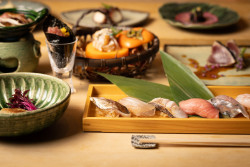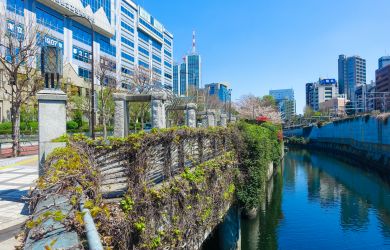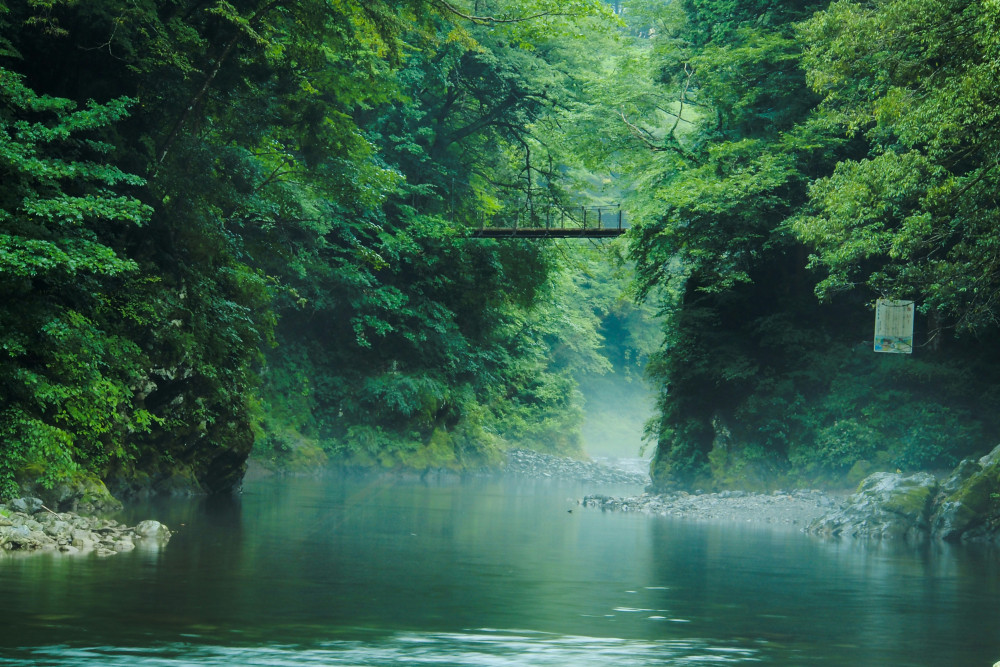
May 16, 2024
A Day Trip to Tokyo’s Tama Region
Embark on a journey in search of the Shogun’s wasabi
Welcome to Shinjuku, the world’s busiest train station. With some two million daily commuters, Tokyo’s hyperhub is a never-ending bustle. There is, though, a chance to escape this human crush. Twelve train lines are in operation here, and through the crowd one can spy the orange JR Chuo Line and its promise of the natural world beyond. Unfamiliar to many it may be, but west of Shinjuku, Tokyo’s Tama region is a nature haven; a pot of green gold at the end of Tokyo’s concrete rainbow.
The Chuo Line takes you past already famous spots like Inokashira Park and the ever-popular Ghibli Museum. Treats, to be sure, and well worth the trip. It’ll take just under two hours to reach Okutama Station, the westernmost station in the Tama area. There’s little time to waste, so the train keeps going. From Tachikawa, the line changes to the JR Ome Line, a dip into Japan’s rail history as the line first began operations way back in 1894.
The sense of space starts growing on you. The dots of heritage like Maimaizu Well outside of Hamura Station, whose snail-like structure turned out to be an ingenious method of sourcing water from the tough terrain. The nostalgia here continues at Ome where Ome-juku. The area surrounding the station, features hundreds of 1950s Japanese, American and European film posters. Time seems still out here.
It’s not until you move past Ome that the Tama region’s underrated fame really becomes evident. The surroundings turn into a rich gathering of forested hills cut through by lost ravines and hidden valleys. The air is lush with oxygen, fresh with the flavor of cypress and the trickle of mountain water springs. The world here has changed. Tokyo it may be, but at the same it is clearly not.
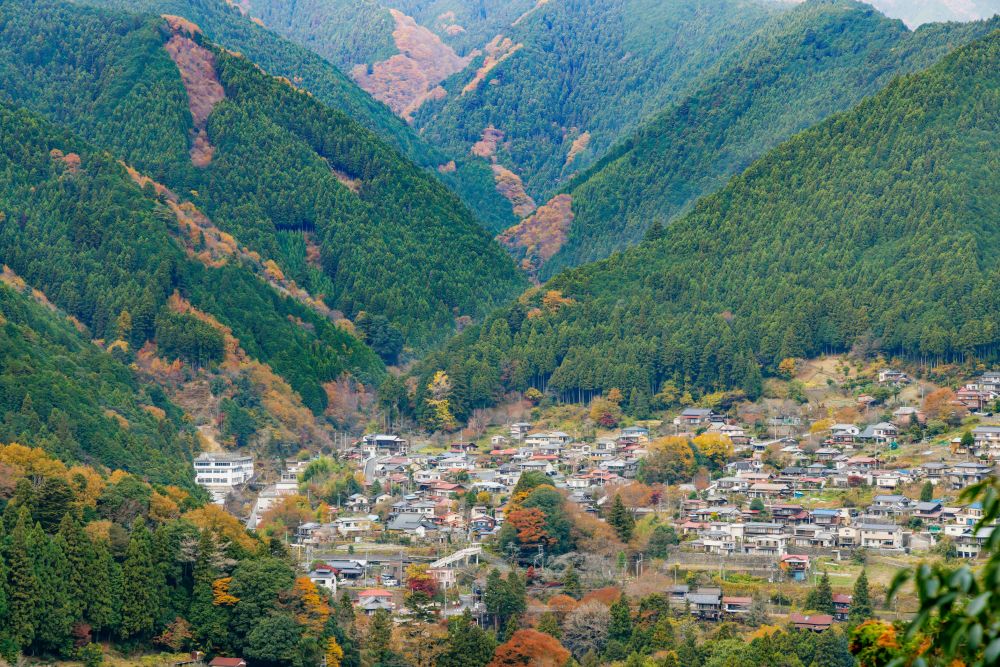
Eventually you arrive at Okutama Station, the end of Tokyo’s modern world. Further west are the stunning limestone caves of Nippara whose drip-drip action took the patience of a million years to create. Clearly, perseverance is nothing new out here. But it turns out there is a little surprise waiting in the secreted groves of Okutama, stems of green treasure that once commanded the attention—and palates—of the shoguns.
The cheap sachets of horseradish and green dye dominating the world are a pale comparison to real wasabi. Cousins to broccoli and kale, wasabi historically found itself paired with fish to prevent spoilage, its antibacterial qualities known for millennia. Grinding its stem also revealed a vibrantly brisk taste, with shogun Tokugawa Ieyasu himself ordering the root’s cultivation in Okutama—in secrecy no less. Its value was such that Okutama wasabi became known as shogun wasabi.
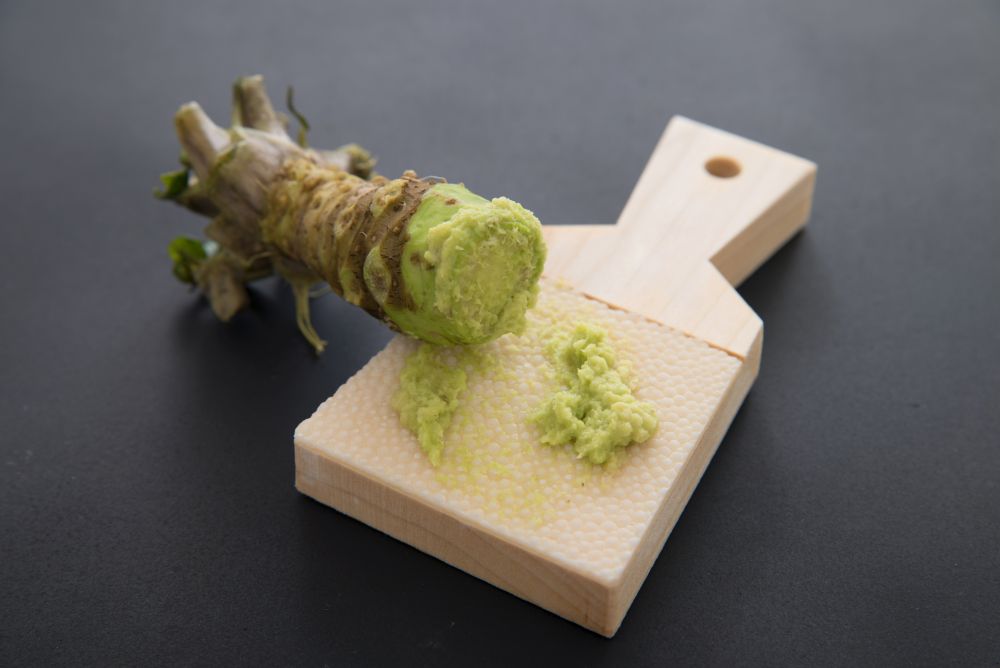
The shogun’s instincts were not misplaced. Okutama is a natural home for wasabi with its mild temperatures, damp shade and fresh mountain waters providing perfect growing conditions. There are over 100 wasabi paddies in Okutama, with some farms putting out up to 50,000 plants. That seems substantial until you consider that mass-production farms in other prefectures regularly reach 300,000 plants. Significant, to be sure, but the unique natural environment and close proximity to the world’s largest market in Tokyo gives Okutama growers some comfort; demand for their efforts is always there.
The rough but exceedingly beautiful terrain means that growing plots are necessarily small, requiring extensive local knowledge. Made up of ancient rock and newer volcanic material, the hills here are porous, like giant sponges. The best wasabi areas are where water seeps up from hundreds of meters below the surface. With each plot soaking up its own unique combination of minerals, the flavor of Okutama wasabi comes with a rich variety.
There is also a strong communal spirit among wasabi growers in Okutama. Since cultivation began in the Edo period, that sense of heritage has remained but it is hard work enticing new blood into the field. Open about their craft, many growers dream of passing on their knowledge to the next generation. Like many traditions in Japan, finding new enthusiasts can be a challenge.
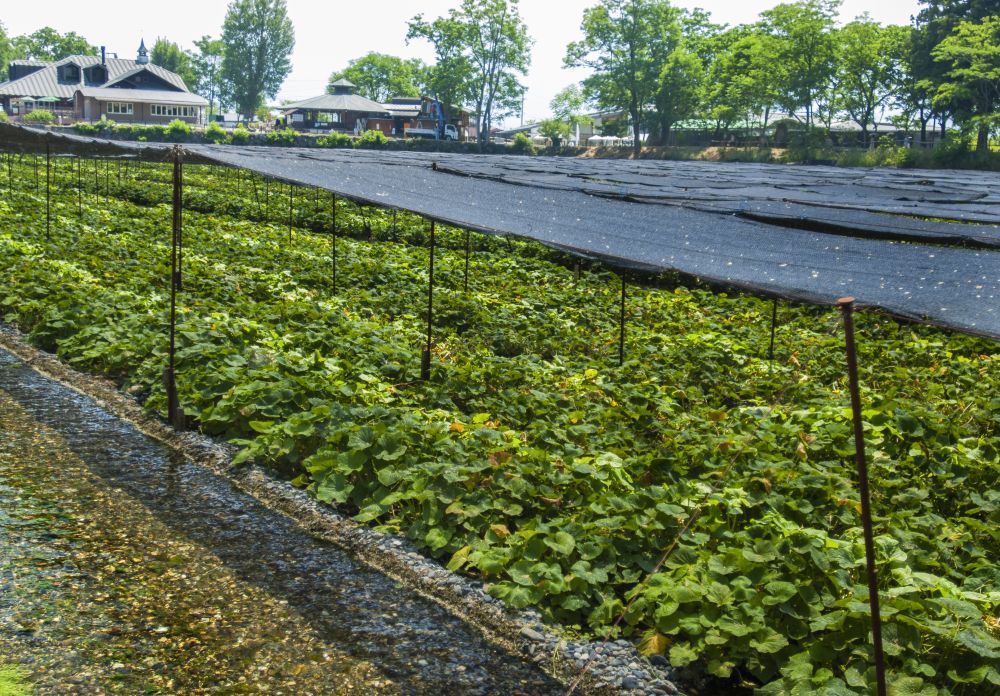
Wasabi Shokudo represents one of the new breed of enthusiasts eager to preserve their area’s food heritage. Crossing Hikawa Gorge takes you to Yamashiro-ya and its century-old history while a few stations away in Kawai, Australian David Hulme has become a passionate local expert. No longer a closed operation, wasabi cultivation has opened up. And though current prices fall short of the heady days of the 1950s and 60s, the quality of produce hasn’t missed a beat.
Mineral-laden from weeks and months of mountain water trickling down the rocky slopes, Okutama wasabi is imbued with an earthy vitality that is both spicy and firm. Painstakingly maintained and monitored, the wasabi terraces fit lovingly into Okutama’s natural contours. Their intimate nature makes them ideal locations during a classic Okutama hike, resulting in the growth of wasabi-themed taste tours and nature treks.
Tokyo may be the city that never ends but out west, surrounded by the mountains of Kumotori, Mito, and Odake, the pace of life has a breathable tempo. And just like the wasabi, a visit here is an opportunity to absorb the best of Tokyo’s natural world. Thanks to the genteel persistence of wasabi growers, the purity of their most famous produce may well be the most honest—and flavorful—representation of what is best about Okutama.
